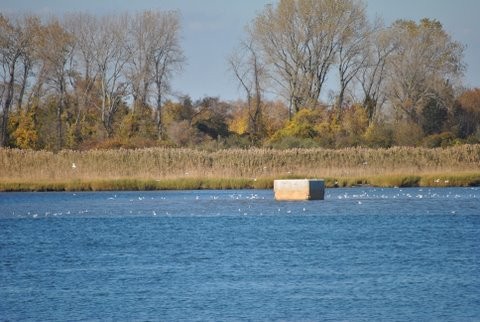10-point plan for sewage
Environmentalists want goverment to rebuild, upgrade Bay Park plant
In the aftermath of Hurricane Sandy — which crippled the Bay Park Sewage Treatment Plant with a nine-foot tidal surge — environmental groups are supporting the privatization of the plant and urging that critical upgrades be made.
“The Bay Park Sewage Treatment Plant has been overlooked and in disrepair for more than a decade,” said Scott Bochner of the Sludge Stoppers Task Force. “Accepting polluting our environment and quality of life daily in the Western Bays has to stop. Sandy proved how fragile the Bay Park Sewage Treatment Plant is. With such devastation, we urge the federal government to fund the rebuilding, upgrade and modernization of the Bay Park Sewage Treatment Plant.”
On Dec. 19, environmentalists released a 10-point plan for the plant that included, installing monitors at the outfall pipe in Reynold’s Channel, creating a public oversight committee and modernizing it to treat nitrogen. Rob Weltner, president of Operation SPLASH said when sewage is treated, one of the byproducts is nitrogen, a key component in the growth of plant life. Nitrogen causes an increase in the amount of seaweed, which then blocks sunlight from reaching the bottom of the bays and reduces the amount of oxygen for fish and crabs. “In order for the Bay Park Sewage Treatment Plant to even be considered an upgrade, you have to address the nitrogen problem,” Weltner said.
According to a release issued by the Citizens Campaign for the Environment, the Bay Park plant discharges between 58 million and 65 million gallons of treated sewage a day into the channel, and new documents conclude that the effluent stays in the Western Bays, sloshing back and forth.
“Rebuilding Bay Park Sewage Treatment Plant without transitioning and modernizing it is not recovery,” said Adrienne Esposito, executive director of Citizens Campaign for the Environment. “We need [Nassau] county to be aggressive in upgrading this plant to provide for a safer, clearer future. Merely fixing the facility is not enough.”
Many residents of Bay Park had partially treated sewage bubbling up into their homes and streets from the plant, which processes 40 percent of the county’s sewage, in the days following Hurricane Sandy.

 50.0°,
Fair
50.0°,
Fair 




